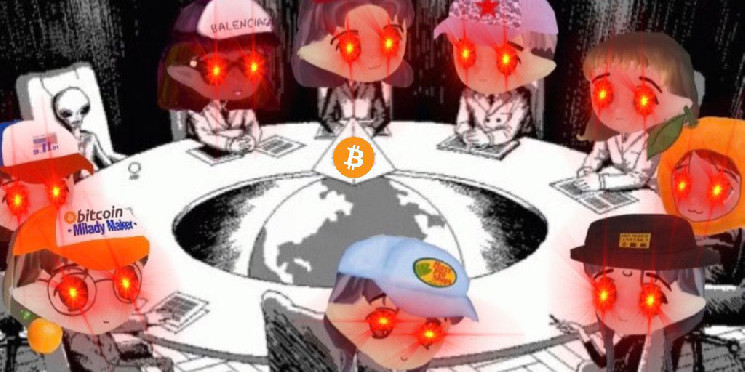NFT
While Ethereum remains the dominant NFT platform in terms of trading volume and total value, Bitcoin undoubtedly has swallowed up much of the buzz in the NFT space through the recent emergence of the Ordinals protocol. And for Ethereum NFT holders who prefer to sit on Bitcoin, there is now one migration solution, but it is a one-way ticket.
Bitcoin Miladys, an NFT project that offers derivatives of the Ethereum-based offering Milady Maker profile picture (PFP) project, launched a bridge in collaboration with marketplace Ordinals Market and the Xverse Bitcoin Wallet. The BRC-721E token standard, as it is called, enables the bridge to migrate graphics and data to Bitcoin via Ordinals.
The bridge effectively allows holders of Ethereum NFTs – defined by the ERC-721 token standard – to move the asset onto the Bitcoin blockchain through a burn-and-mint process. The original Ethereum NFT is sent to an inaccessible “burn” address, meaning it is essentially destroyed on-chain, but then the asset is recreated on Bitcoin via the Ordinals protocol.
Our #Bitcoin Ordinals bridge is now live
In collaboration with @OrdinalsMarket_ & @xverseApp
Bridge: https://t.co/T9UhTNVp4W
New token standard: https://t.co/YDERWSPPfa
Marketplace: https://t.co/UTzAzBsO9P
Let’s take over #Bitcoin! pic.twitter.com/Ki9dGfxuuJ
— Bitcoin Miladys
(@BitcoinMiladys) May 29, 2023
Bitcoin Miladys were initially minted on Ethereum, so the bridge was initially designed to allow its holders to move to Bitcoin. But as the Ordinals Market page describes, the BRC-721E token standard and bridge can work with any compatible Ethereum NFT.
Some cross-chain bridges use an escrow wallet in the middle and hold the original NFT or assets, then create a new version on the target chain. That makes it possible to reclaim the original asset on the original chain by burning the minor version.
It’s a one way bridge by the way pic.twitter.com/vTCj8paFV6
— Bitcoin Miladys
(@BitcoinMiladys) May 28, 2023
But that is not possible with NFTs that have migrated to Bitcoin via the BRC-721E process. As mentioned earlier, it’s a one-way ticket and the original NFT is essentially destroyed in the process.
The process may still appeal to Bitcoin aficionados, or perhaps NFT holders who believe the brisk rise of Ordinals will add value to their migrated NFT. However, there are potential risks associated with switching blockchains.
For example, in February, a Bored Ape Yacht Club owner burned its original Ethereum NFT and hit a new version on Bitcoin via Ordinals. Shortly after, one of Bored Ape’s co-creators at Yuga Labs tweeted that the holder had “effectively given up” the license to the myriad perks and benefits associated with Bored Ape NFT ownership.
Ordinals draws former Ethereum developers to build on Bitcoin
Launched in January, the Ordinals protocol creates a way for people to “subscribe” digital media such as artwork, PFPs, and even functional apps and games to the Bitcoin blockchain. Each “digital artifact” is inscribed on a single satoshi, which is 1/100,000,000 of a full Bitcoin.
More than 10 million registrations have been made so far and that milestone was reached on Monday. The month started with just 3 million inscriptions in total, and the latest surge was fueled primarily by the emergence of the BRC-20 standard, which uses Ordinals inscriptions to let users store fungible tokens on Bitcoin.like meme tokens.






